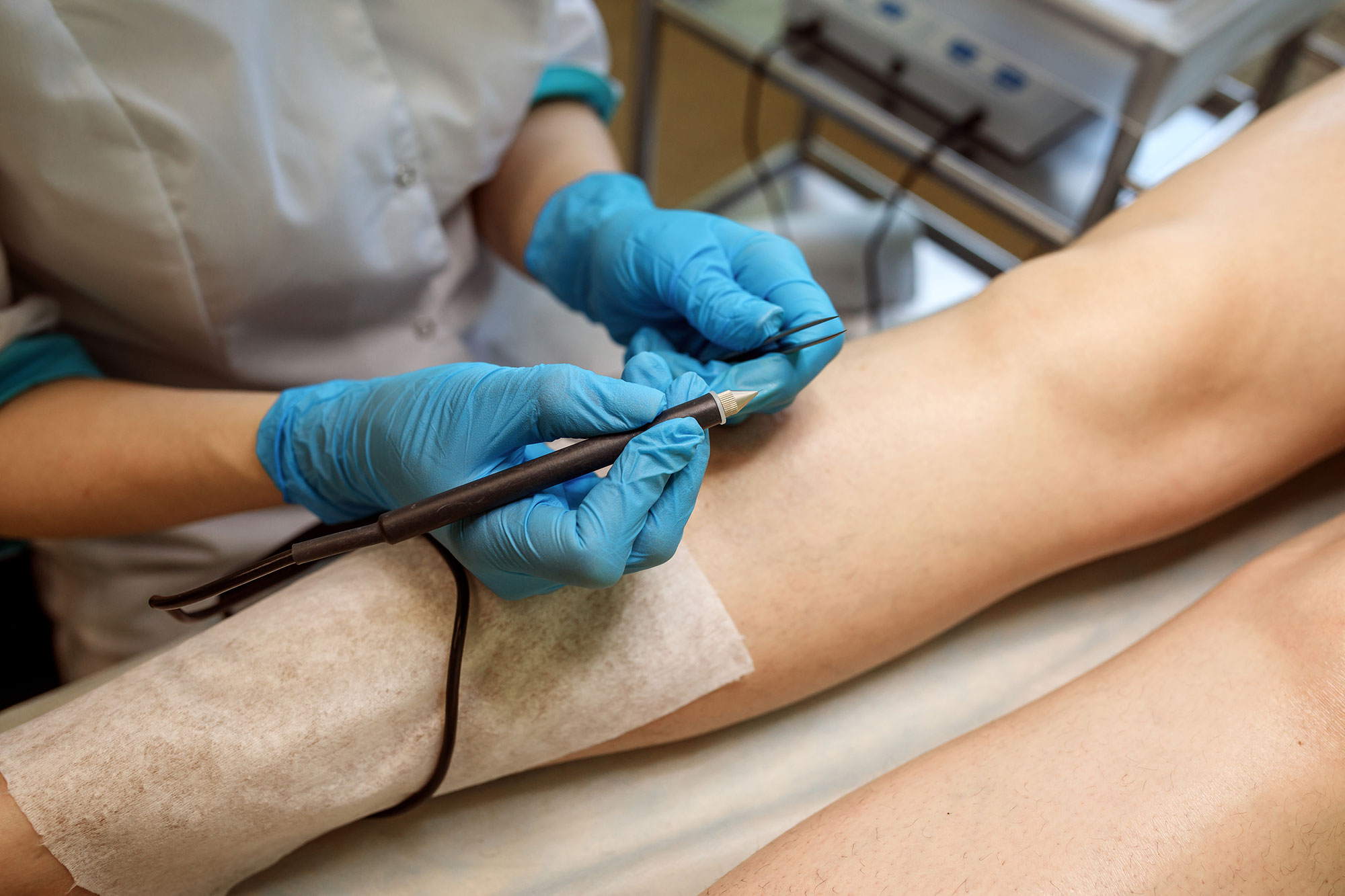Hot wax, cold wax strips, electric epilator, razor or depilatory cream… there is no shortage of options for waging war on body hair.
We rarely think of electric hair removal by thermolysis as a permanent remedy. Yet it is a very old hair removal technique that works! It is a particularly effective hair removal method for men and women, regardless of their skin type and especially their hair type, whether red, white, grey or fine downy hair.
Performed hair by hair, this method of hair removal takes a lot of time, so it is often recommended to treat small areas (face) or hair that cannot be treated by laser. In this respect, electrolysis hair removal is a perfect complement to laser hair removal to say goodbye to hair.
It is ideal on the face as a treatment for peach fuzz.
WHAT IS THE PRINCIPLE OF ELECTROLYSIS?
In concrete terms, this involves introducing a sterile needle, called a “filament”, into the hair follicle canal, right to the base of the hair, in order to destroy it.
The objective is to send a small electrical discharge of low intensity but high frequency, of very short duration, to the bulb. This triggers a chemical reaction called electrolysis which destroys the hair permanently. All this is done in complete safety and without danger to the surrounding tissues.
ELECTRIC HAIR REMOVAL: WHAT ARE THE INDICATIONS?
Facial hair removal is often an ideal indication for electrolysis. As the treatment is performed hair by hair, a session can be very long: thus electrolysis hair removal is often recommended to treat areas with low hair density or small size.
These many advantages are that it can :
- Treat white, gray or red hair that laser hair removal does not treat,
- Constitute a maintenance solution for areas already treated with laser and where a slight fuzz grows back (residual hair),
- To be used in addition to laser hair removal for large areas
Electric hair removal sessions are of course suitable for all skin types, from the fairest to the darkest, even tanned, all year round.
On the other hand, beware of the sun: you should not expose yourself to it for at least two weeks, before and after a session.
HOW DOES AN ELECTRIC HAIR REMOVAL SESSION TAKE PLACE AT DR HAVET’S OFFICE?
The first session is usually short and is mainly used to test the skin’s reaction to electric hair removal. Most people choose to do short sessions, even if the area to be treated is large.
In concrete terms, you will be comfortably seated on your back or stomach, depending on the treatment area, and Dr. HAVET will carefully clean your skin.
The size of the needle (filament) and the power of the electric current are adjusted according to the diameter of your hair.
After having defined the areas, the doctor can then proceed with the electrolysis, hair by hair, meticulously. He usually starts with the thickest hairs towards the finest.
Once the hair has been destroyed down to the bulb, the practitioner removes it with forceps.
DOES ELECTRIC HAIR REMOVAL HURT?
It all depends on the sensitivity of each individual. The beginning of the session can be uncomfortable, but the body quickly gets used to it as the sensory receptors become saturated. But as it is slower, because it is done hair by hair, the sensation can be a bit unpleasant.
It is preferable to apply an anesthetic cream one hour before the session in order to help the patient feel more comfortable.
WHAT ARE THE CONSEQUENCES OF ELECTRIC HAIR REMOVAL?
A slight swelling or inflammation may be seen where the filament entered and around the hair area. Small scabs may also form in the days that follow, a healing cream can be applied and they will fall off by themselves.
WHAT ARE THE RESULTS?
The results can be seen from the first session. As the sessions progress, hair growth will become less and less dense. Electrolysis hair removal is permanent.
HOW MANY SESSIONS ARE NEEDED?
The number of sessions is very variable since it depends on the area of hair treated and its pilosity. In all cases, Dr HAVET will be able to propose an estimate in consultation after having examined you.
As with laser hair removal, only hair in the growth phase (anagen phase), i.e. still attached to their bulb, are destroyed following electrolysis, which explains the need for several sessions.
For large areas, we always prefer to opt for laser hair removal, unless it is impossible with this technique (white, gray, red hair).
WHAT ARE THE CONTRAINDICATIONS TO ELECTROLYSIS HAIR REMOVAL?
The most important are the following, but in all cases, Dr HAVET will make sure that you have no contraindications during the consultation.
- Pregnancy and breastfeeding
- Nickel allergy
- Wearing a pacemaker
- Infection or localized skin condition
- Epilepsy
Interested in permanent hair removal via electrolysis? Would you like a consultation with Doctor HAVET in the West Indies? Make an appointment now.


